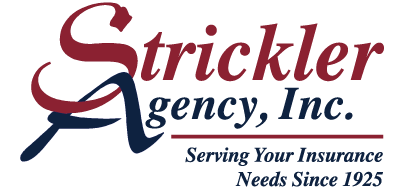Use the yellow hot spots and explore how risk management can help protect against common risks.

Every business faces risk. The level and type of risk will vary based on multiple factors including industry, size, and location, among others. Risk can never be fully eliminated, but it can be reduced.
Risk management is the practice of taking proactive steps to identify and mitigate risk. It’s a broad topic that involves many areas of a business, from personnel and technology to safety and compliance. Risk management can not only help a business identify what risks need to be insured, it can also pinpoint ways to reduce.
Staying compliant is hard. The laws for many facets of business are ever-changing. Employee handbooks can become out of date. Employment and other contracts can contain problematic language if not handled properly. Employee relations and human resources concerns can get complicated.
There are insurance coverages like employment practices liability insurance (EPLI) and directors and officers liability insurance (D&O) that can help pay for the legal costs of defending lawsuits against the business, but risk management can help shed light on areas of the business where process improvement and consistent practices could help avoid litigation.
Employees can make mistakes for a number of reasons. Sometimes, it’s simply the result of a lack of education. Some businesses may choose to skip training because they don’t have the time or resources to devote, but this can lead to mistakes and accidents.
Conducting employee training can reduce risk. For example, sexual harassment training often helps businesses avoid lawsuits. Safety training is essential to avoid workplace injuries. Many insurers will help companies provide employee training as a cost-saving measure.
The Occupational Safety and Health Administration (OSHA) sets and enforces standards aimed at ensuring the environment in which employees work is safe and healthful. Employers are required to comply with these standards and OSHA may audit workplaces to verify compliance. Employers that fail to comply can be faced with hefty fines.
Lockout/tagout, hazard communication, and powered industrial trucks standards, among others, all require specialized programs. Utilizing outside resources to create and train employees on these programs can be a cost-effective solution that ensures your business is doing everything possible to meet required standards.
If your business involves driving, you know that safety is paramount. Failure to drive safely not only endangers the lives of your employees and the general public, but it can also have costly repercussions for the business.
Increasing driver safety is a cost-effective risk management tool. Classes and seminars can be effective resources. Telematic programs allow businesses to see every move a driver makes. Driving simulators can offer hands on training for drivers of trucks, school buses, agricultural haulers, and other vehicles to prepare them for scenarios they may face out on the road.
When it comes to weather and natural disaster related losses, where your business is located impacts the kinds and level of risk it faces. Fires, hurricanes, blizzards, tornadoes, earthquakes and other events can cause major losses to your business.
While it’s impossible to control the weather, it is possible to lower the risks the weather poses. Risk management involves assessing which events are most likely and what steps a business can take to protect their building and contents, their employees, and other systems.
Technology failures can be extremely detrimental to an organization. Problems can arise from power outages or surges, cyber-attacks, or telephone and communication failures.
Understanding what risks the technology your business uses is susceptible to, the processes a tech failure could affect, and how to prevent losses from tech failures is an essential part of risk management. This can help determine the proper insurance policies that are needed, such as cyber liability, property, and business interruption coverage.
- Safety Program Assessment and Development
- Hazard Identification
- Compliance Solutions
- Safety committee support, including assistance with establishing a Certified Safety Committee (5% savings on your workers compensation insurance premium), and providing the annual recertification training
- Mock OSHA audits and inspections
- OSHA Reporting and Recordkeeping Requirements
- Ergonomic Evaluations
- Loss Trend Analysis
- Strickler Solutions – Industry Leading Risk Control Portal
This is just a small sample of services that our Risk Manager can provide. Contact us for more information at 800-503-8908 or email us.


